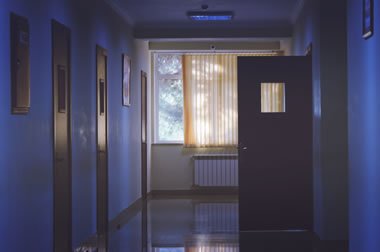For any UK business, including care homes, controlling legionella in the workplace is a legal requirement. The starting point for any control scheme is a legionella risk assessment and this should be performed by a competent and knowledgeable person, to ensure it is undertaken in the proper manner. It should also be reviewed regularly, at least every two years or sooner if things change. Simply having a risk assessment done every now and again is not enough; it must be shown to have enough detail to ensure every risk from legionella and Legionnaires’ disease has been carefully considered and suitably managed to protect people. These assessments must be available for inspectors to view whenever an inspection is conducted by the Care Quality Commission (CQC), Local Authority or Health and Safety Executive. There should also be proper scheme of control in place to manage the risks identified. This will follow on from the risk assessment and should include a range of measures that may include temperature control, cleaning and disinfection routines, temperature monitoring, taking water samples and checking them for legionella bacteria etc. Proper management of the water systems, the levels of bacteria, and any water treatments given, should be evident and appropriate for the care home and its water systems. No two care homes will be identical, so an appropriate system must be developed and maintained to manage the legionella risk within each individual home. The HSE’s ACOP L8 is the main health and safety document every care home should follow to ensure they are compliant with the law and the legionella guidance provided by the CQC. The ACOP L8 covers several important areas: An independent expert on legionella compliance such as Legionella Control International may prove to be the best way to ensure legionella compliance is achieved within a care home. An alternative would be to send one or more members of staff for legionella training, so they are qualified to be competent persons to undertake the required processes. Compliance is not an option, but a legal and socially responsible necessity, particularly as elderly people within care homes (and those with poor health) are among the highest risk categories for contracting Legionnaires’ disease. To find out more about our specialist legionella risk management services for care homes and healthcare operators call us today on 0330 223 36 86 or get in touch here … contact us For additional information about the Health & Safety Executives ACOP L8 dealing with Legionnaires’ disease and the control of Legionella bacteria in water systems … hereCare Homes, Legionnaires Disease & UK Law – What You Need To Do
 Some industries are more vulnerable to the potentially devastating effects caused by Legionnaires’ disease and legionella contaminated water than many others. Care homes, and in fact the wider healthcare sector is one of these, and yet there have been recent cases whereby care homes have been identified as failing to meet their duties and requirements in this important area of health and safety compliance.
Some industries are more vulnerable to the potentially devastating effects caused by Legionnaires’ disease and legionella contaminated water than many others. Care homes, and in fact the wider healthcare sector is one of these, and yet there have been recent cases whereby care homes have been identified as failing to meet their duties and requirements in this important area of health and safety compliance.The importance of competency in the risk assessment process
The scheme of control and management procedures for care homes
Following the HSE’s ACOP L8 to control legionella risks
UK law and how to achieve legionella compliance
Legionnaires’ risk assessment
Expert legionella & Legionnaires’ disease risk management support
Further reading

 Legionnaires Disease in Dubai – Is it Safe to Visit?
Legionnaires Disease in Dubai – Is it Safe to Visit? 